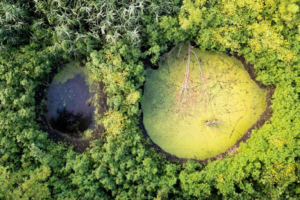The genealogy company has digitized and published 38,000 newspaper articles from between 1788 and 1867—before Black Americans were counted as citizens in the U.S. census
Thanks to the rise of commercial genealogy platforms, millions of Americans are now researching their family histories. However, for many Black Americans, the process can be challenging, if not impossible, because of insufficient documentation describing their enslaved ancestors.
Now, a newly released database of historic records may help fill in some of those gaps. This week, Ancestry published 38,000 newspaper articles containing the names, ages, physical descriptions and locations of more than 183,000 enslaved people in America.
5 Surprising Facts About Abraham Lincoln
“Sometimes data can feel impersonal, but what this significant number really represents is over 183,000 formerly enslaved individuals—people who may not have been named or recognized since the original newspaper publications,” Nicka Sewell-Smith, a genealogist and senior story producer for Ancestry, tells Smithsonian magazine.
The collection, called “Articles of Enslavement,” is free for anyone to access online. Ancestry has already digitized more than 18 million records related to formerly enslaved or newly emancipated individuals, drawn from sources such as the Freedmen’s Bureau and the United States census.
The newly published documents, which cover the years between 1788 and 1867, could help Black families across the country who are interested in tracing their roots. Black Americans were counted as citizens on the census for the first time in 1870, and records from before that year are scarce. “Ancestry tracing often leads to dead ends, uncertainty and more questions, especially when it comes to identifying the enslaved,” as Tracy Scott Forson wrote for Smithsonian earlier this year.
As such, to find information from before 1870, Black families need documents other than census records—which the new Ancestry collection might be able to help with. More broadly, the documents could also provide historians with new insights into chattel slavery in the U.S.
“By piecing together individual stories, researchers can construct a more detailed picture of the lived experiences of Black Americans, enriching our collective understanding of history,” says Karcheik Sims-Alvarado, a scholar of Africana studies at Morehouse College, in a statement from Ancestry.
Some of the newspaper articles describe the buying and selling of enslaved people. Others are more like classified ads, with enslavers offering rewards for the return of runaways.
For example, in 1788, an enslaver named David Hawkins published a short piece in the Poughkeepsie Journal offering a $10 reward for the return of two enslaved men, Prime and Nathaniel Rockwell, who’d absconded near Goshen in Orange County, New York. The article described each man’s appearance, clothing and age.

Ancestry acknowledges that the documents may be distressing or traumatic to read. In a video, Sewell-Smith urges users to take an “open and critical approach” to their research.
The company also worked with Bethany Bell, a historian at the University of Virginia, to offer recommendations for prioritizing mental and emotional health while reading the documents. Bell shared tips for parsing the newspaper articles, including “hidden meanings and unstated implications” to look out for while reading.
“Conducting Black history research is a journey full of emotional roadblocks and existential dangers, so sometimes it’s good to get off the road for a bit, to rest and refuel,” writes Bell in an article shared by Ancestry. “Sometimes that means closing my laptop for a bit and going for a walk or doing a brief silent meditation. Sometimes that means venting my frustrations with what I’ve encountered to a friend or family member.”
For Black Americans who want to begin researching their family history for the first time, Sewell-Smith recommends starting with what they know. After that, they should “expect an investigation of sorts, where you uncover new paths and discoveries,” she tells Smithsonian. “Common records that help with this research include census data and marriage or birth certificates.”
The Smithsonian’s National Museum of African American History and Culturealso offers free, in-person group genealogy sessions at the Robert Frederick Smith Explore Your Family History Center, as well as one-on-one virtual sessions.
Get the latest stories in your inbox every weekday.




